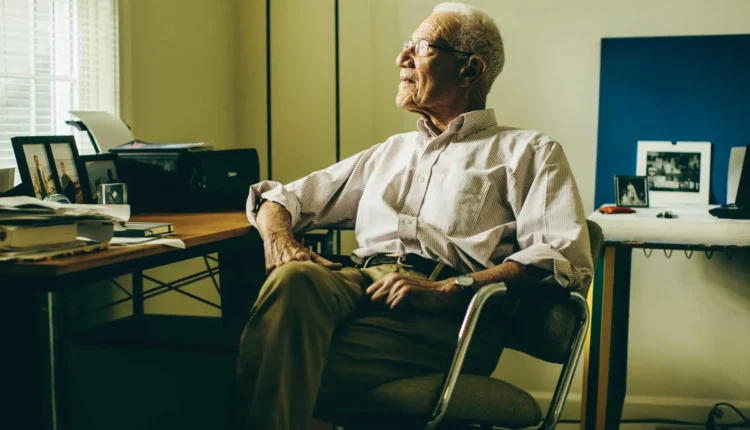Lasting Legacy of Robert Solow: Lessons for India
When the US embassy officials for a party wanted to know about his rank for protocol purposes, Solow told his secretary: Tell them I am a full Professor of Economics at MIT. They do not have anything that high in the government. For someone who has been at MIT since 1945, and made a pioneering contribution to the exogenous model of growth theory in tandem with Swan in 1956, this is not an exercise in pomposity A Nobel laureate in Economics in 1987, Paul Samuelson, who was the first American to receive it in 1970 and sat adjacent to him in MIT, described Solow as ‘the consummate economist’s economist. People sought his advice not because they agreed with his eclectic post-Keynesian ideology but because he respected evidence.’ His PhD students included four Nobel laureates; Akerlof, Stiglitz, Diamond, and Nordhaus. All his former students idolized him and found him’ brilliant, generous, and hilarious’.
Solow first studied sociology, anthropology, and elementary economics before settling down to Economics at MIT in 1945. Academic theories that predated him had the discomforting implication that capitalist economies were always teetering between boom and bust. He observed that the history of capitalism did not look like that. He attempted to explain long-term economic growth by looking at capital accumulation, population growth, and improvement in factor productivity. He was the first to isolate the contribution of capital, labor, and factor productivity. Speaking in 2009, he had observed that advances in technology rather than increases in capital and labor have been the primary drivers of economic growth in the USA. 80% of 20th-century American growth was due to total factor productivity of capital and labor. Euphuistically called Solow residual was’ his pride and joy.
Many studies have been done since then to assess the relative contribution of capital and labor increase and factor productivity in developing economies like China. Hu and Khan in a study of China brought out how productivity contributed to 18% of GDP growth during the years! 953-1978, which went up to 41.6% in the high growth period of China during 1979-1994. This was the period when Deng brought in economic liberalization, breaking free from the command economy model of Mao’s China. India also witnessed a similar spurt in factor productivity when it broke free from the dirigisme model of Nehru and Indira , by ushering in economic liberalization in the 90s. India not only broke free from the ‘Hindu rate of growth ( Raj Krishna) of 3.5% during 1960- 1980 to 9.6% during 2004-2005, the contribution of factor productivity went up from around 20% (1960-1980) to 39% (2005-2006 ).
In a seminal study made by him and Micheal Spence (Nobel laureate) as part of the WB Commission on Growth & Development, they identified 15 countries that had achieved 7% growth since 1950. This included countries like China (1961-2005), Japan (1950), and South Korea (1960-2021). The common ingredients of success have been high savings and investment, import of knowledge and technology, rapid export growth, and market-friendly policies. They could not have been more prescient in the context of India when it embraced market-friendly policies in taxation, financial intermediation, and breaking the shackles of trade protection. As a matter of fact during 1960-1980, the high noon of socialism and nationalism, India’s gross domestic savings as % GDP was 16.5% only, with a growth rate of 3.5%, while the Gross domestic savings rate was 34.8% during 2005-2006 with GDP growing at 9.6% (Source: Economic Survey). The % people below the poverty line also went down from 51% to 27.5% during these two periods.
Solow emphasized the role of improving the quality of labor as important as technology; particularly better health, nutrition, and education. A look at the trend of nutrition indicators in India shows how they are completely out of sync with its high growth trajectory. A comparison of % of children, who are stunted shows against 51% in 1998-99 (NFHS 2), it has come down to 35.5% in 2019-2021 (NFHS V). In terms of underweight children, the reduction is from 42.7% to 32.2% in these corresponding periods as per the same NFHS surveys. The most disappointing area is % of anaemia among adolescent women which has gone up from 54.2% in 2015-2016 to 58.9% during 2019-2021. In terms of learning outcomes in public schools, the ASER surveys keep on lamenting about the low levels of reading, writing, and numeracy among school children.
Solow served as a Research Assistant to Wassily Leontief, who created the first input-output model of the American economy. Leontief showed how one sector can affect other sectors. The Leontief paradox showed how capital-rich countries like the USA export labor-intensive products because of high labor productivity. However, technology for him was an exogenous variable. The subsequent growth economists like Arrow, Romer, and Luckas believed that technology and diffusion, thereof, are endogenous variables, where the government must invest handsomely as they have significant spillover effects on the economy. However, Solow and the subsequent growth economists believe that investment in human capital is a significant factor in ushering in durable economic growth. India spends around 3.5% of its GDP on education 1.3% on health care and .8% on R & D (5.6%) as against around 12-15% spent by better-performing economies like China & Korea.
Solow would have been deeply anguished by Modi’s obsession with a $5 trillion economy instead of setting a credible road map for improving the nutrition, education, and healthcare needs of its citizens by investing handsomely in the social sector, technology &R& D. India is at the crossroads today. With a respectable growth rate, it is grappling with divisive majoritarianism and intolerance towards responsible dissent. As Raghuram Rajan observes in his latest book ’Breaking the Mould’’ we can accelerate economic development by investing in human capital. services and manufacturing centred on innovative new products and making India a ferment of ideas and creativity.
Prof Misra teaches Macro Economics

